Welcome to post 3 of 26 in the A-Z guide to full-time RV living!
This post is all about how we maintain relationships with friends and family while living on the road full-time, how we socialize and meet new people, and how we thrive as a couple that is together 24/7 in a 100 square foot living space.
Part One: Community
Maintaining Relationships
Mark & I were living an independent lifestyle in a rural area before setting out on the road full-time, so we didn’t necessarily leave behind a tight-knit community. While living stationery in a house, friends and family would come visit us from time to time and we’d go visit them. The same holds true now, the only thing that changed is that our friends and family have to figure out where we are or where we’re going to be before they come visit. This has actually been really fun as we can offer options. Do you want to come visit us in the mountains? At the beach? Here are some airports we can camp close to, where can you get a cheap flight? It’s really fun to be able to share a new location, and new activities, with our friends and family when they come visit us.
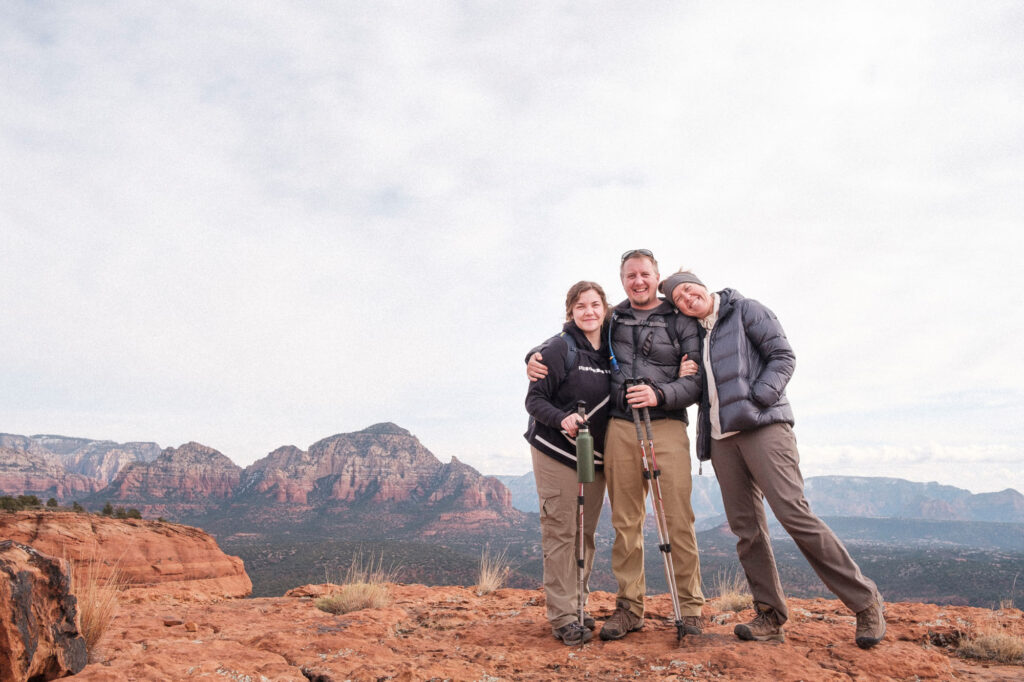
How those visits work depend on who it is that’s coming to visit. Many of our friends have their own campers so they already have everything they need and all we have to do is send them coordinates so they can find us. Some of our family members don’t mind roughing it and will sleep in whatever we have to provide them. Other family members will rent an AirBnB that offers room for us to park our RV on the side of the house.
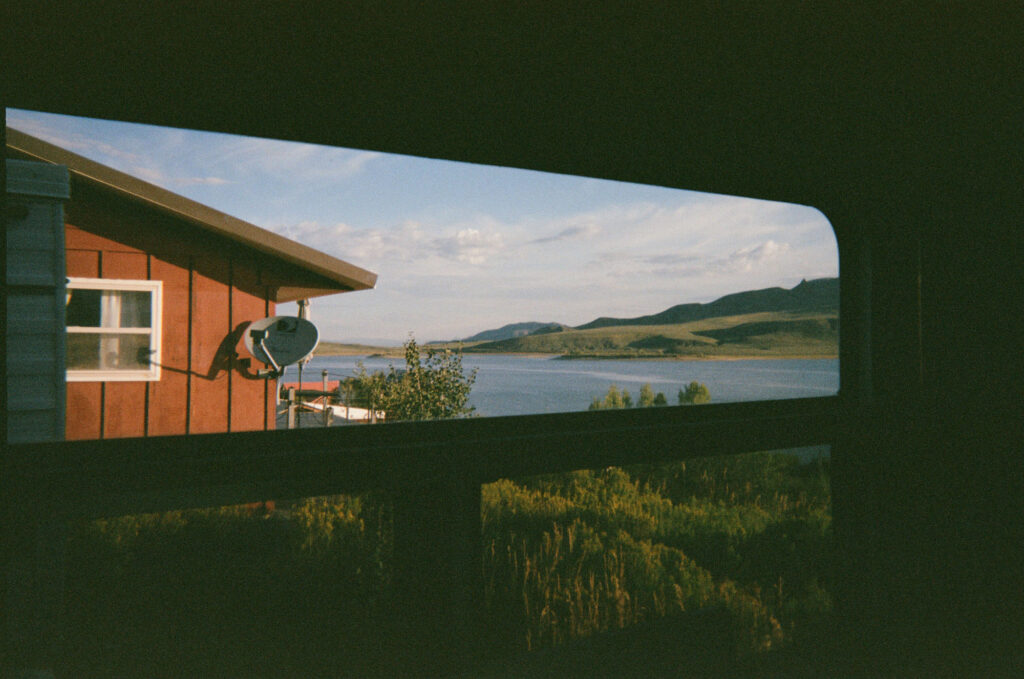
Something that surprised me when we moved on to the road full-time is that we actually spend more time with friends than we did when living in a house. All of our friends love to camp and so they often come find us and become our camp neighbors for days, or sometimes weeks. I never loved hosting when we lived in a house, but I absolutely love having friends as camp neighbors. It allows for us all to enjoy our similar interests like going on hikes, sitting around a fire, etc.
Socializing & Making new friends
Mark & I are introverts and are lucky enough to be extremely content with just each other’s company. But the people we occasionally meet on the road have often quickly become friends. Meeting other full-time travelers is a pretty awesome filter for automatically having a lot of things in common. It’s safe to say the people we meet on the road love travel, freedom, exploration, living with less, being outdoors, etc. as much as we do. We’re able to quickly bypass the small talk and connect on a deeper level. As a socially awkward person, that level of connection is something I really enjoy.
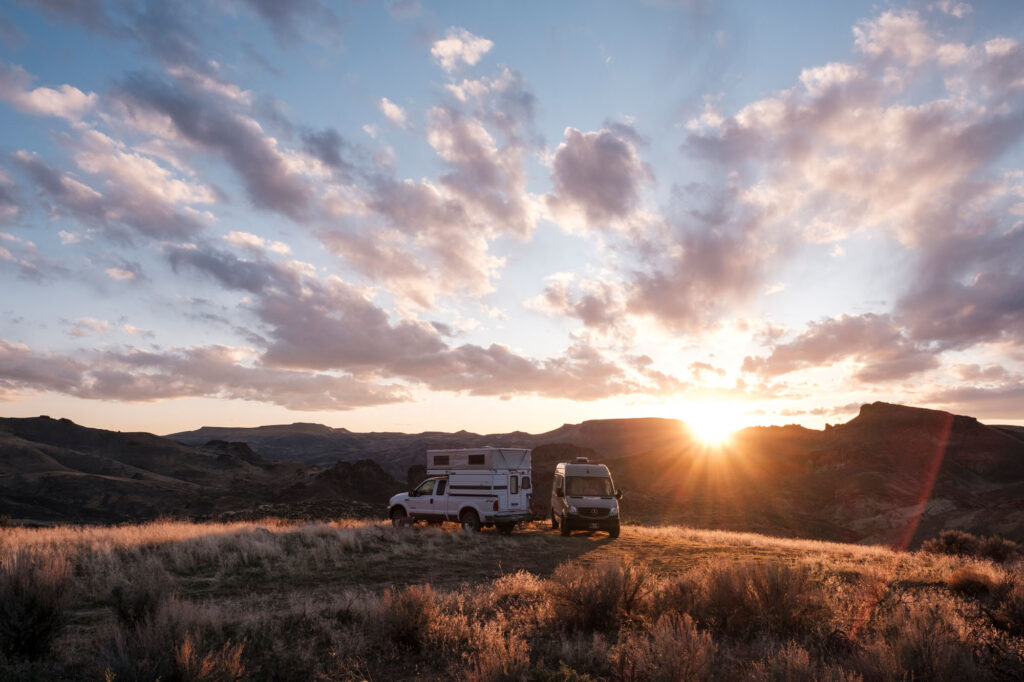
The only downside to this way of making new friends is that you’ll inevitably end up with people you love spread out all over the country (or world). The more we travel, the more I feel pulled in multiple directions in order to stay connected with all of our favorite people. A bit of a bittersweet perk to living on the road.
How and where you travel will also have a lot to do with how often you meet new people. If you’re an introvert and prefer solitude and seclusion, you can find far away places to satisfy that desire. If you’re an extrovert with a strong desire for socializing, you can frequent campgrounds and RV parks where there will always be other people around.
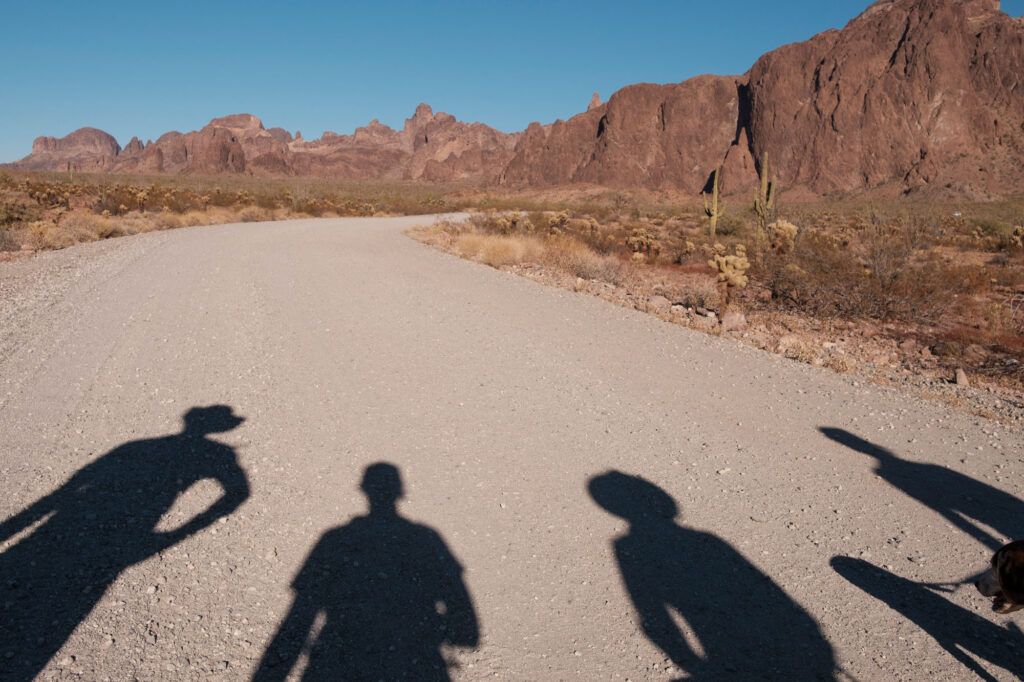
It’s easy to be around people as little or as often as you like. The thing that’s not easy to do while living on the road is being around the same people all the time. When we camp with our friends, we get the opportunity to spend some great quality time together over a week or weekend, but we may not see them again for a year’s time, depending on where we (and they) are.
Having a home base
There are a lot of pros to having a home base, or a location that you return to regularly. One of those pros is getting to feel a sense of community. Thanks to our business, we spend every summer in the same area of Colorado. Whenever we return, it feels like coming home, even though we’re camped out in the wilderness. It gives us the opportunity to see friends, maintain business relationships, and generally feel like we’re part of a community. It’s not easy to have roots and wings, but the way we’ve structured our travels lets us enjoy the best of both worlds.
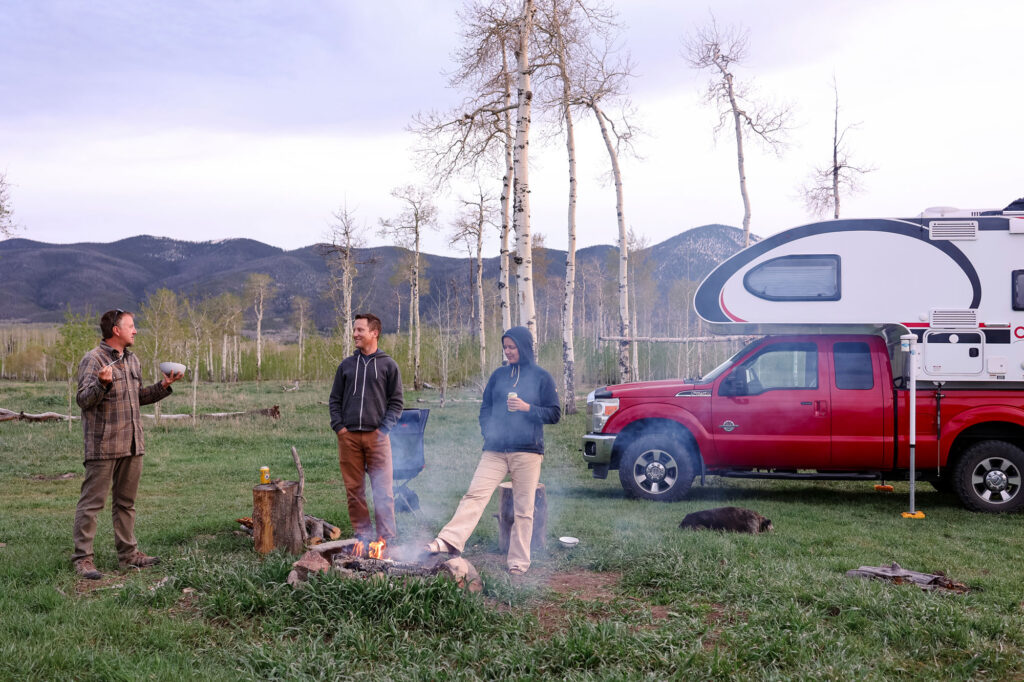
Using social engagements as route markers
A great way to establish a balance between travel and maintaining relationships is to use social engagements to inform your travel schedule. When looking at the year ahead, we often will have a handful of things we know we want to be a part of. For example, attending a wedding or graduation, visiting family for the holidays, joining friends on a retreat, etc. Adding those engagements to a calendar and then planning your travels around that will create markers on a map that you can then fill in with travel from place to place in between.
Sometimes traditional travel is still the best option
Just because we can drive anywhere in the country doesn’t mean we want to or that it makes sense for us. Zigzagging the country regularly can get exhausting and expensive fast. When it doesn’t make sense to drive, we’ll book a flight and either park our home at the airport, put it in storage, or leave it parked in a friend’s driveway. All that to say, you can still travel traditionally, in addition to living a nomadic lifestyle.
I hope after reading this you’re able to see how maintaining your relationships with friends and family while living on the road isn’t impossible, it just looks a bit different than it does when you live in a single location. We’ve had such a wide variety of great experiences with our friends and family while living on the road and also continue to meet really awesome people that we never otherwise would have met.
Part two: Companionship
If you’re traveling full-time with your partner, nurturing that relationship (in my opinion) is priority #1. There’s no room for tension when sharing a tiny living space and so healthy habits and open communication is key.
Mark & I have been business partners since the start of our relationship and so being together 24/7 wasn’t new to us. But for many people, making the move to living on the road full-time could mean spending more time with your partner than ever before. And even if you are used to spending a lot of time together, it could be an entirely new ballgame doing so in only a few square feet, rather than sharing an entire house.
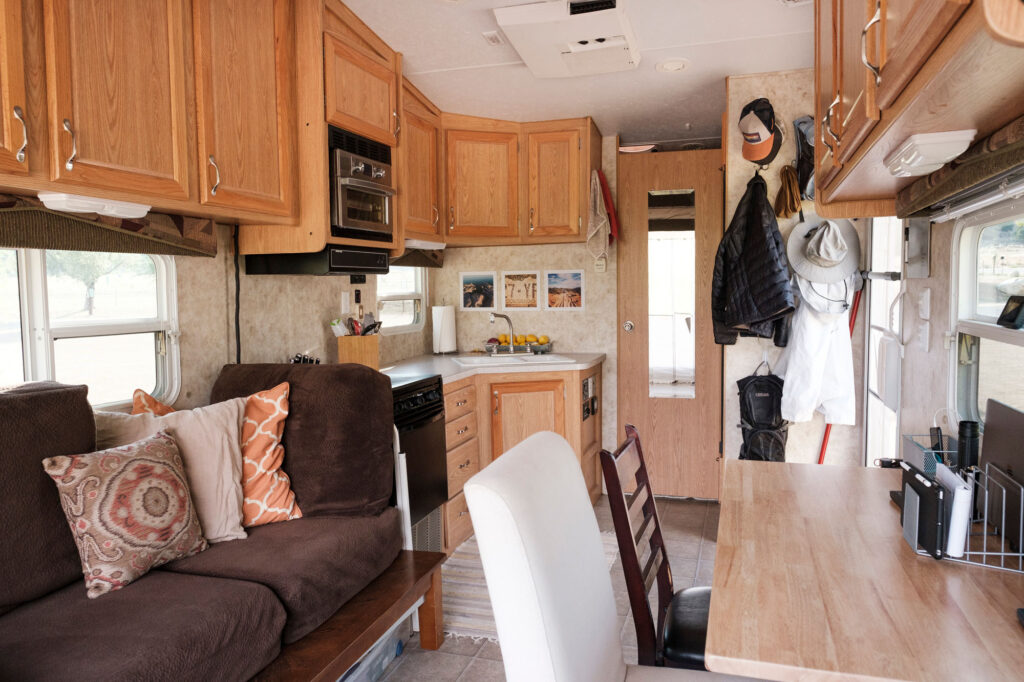
A few things that work for us…
Having both combined and separate hobbies. Doing things together that you love, such as biking, hiking, paddleboarding, etc. will enrich your travels and is a great way to make lasting memories with one another. But since you’re together 24/7, I think it’s just as important to make time for yourself so that you don’t get burnt out on being together constantly.
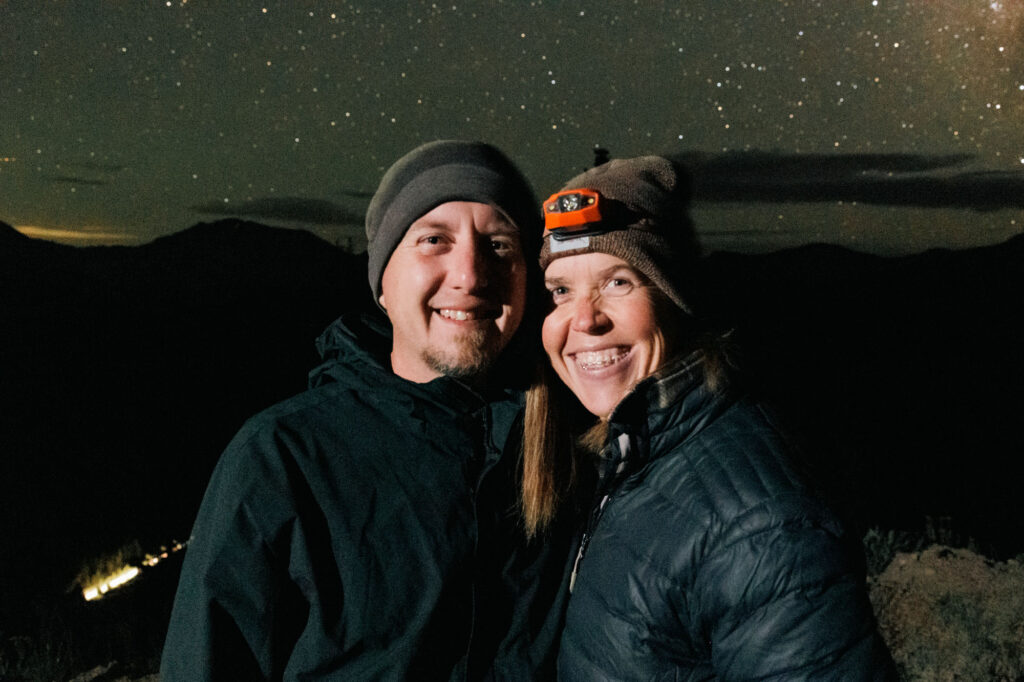
Agreeing on a travel style. Next week’s post is going to be all about defining your travel style which I believe to be a pivotal step in enjoying full-time travel. If you and your partner have different ideas on how and where you want to travel (for instance one of you wants to move locations frequently while the other wants to get to know one place over a few weeks time) then there’s going to be constant friction.
Establishing roles. There are several pros to establishing who does what when you travel full-time. It helps reduce decision-fatigue (a common cause of travel burnout), it helps establish routines (a hard thing to do when always moving around), and it helps create harmony between you and your parter. Some of the roles I’m talking about pertain to…
- Managing utilities (ie, dumping tanks, refilling fresh water, tracking solar usage, etc)
- Packing for moving days (I always pack the inside of the RV while Mark preps the outside)
- Route planning and deciding where you want to go next
- Making reservations at campgrounds and RV parks (if needed)
- Driving and navigating (I fail epically here and Mark does both)
- Laundry & Housekeeping
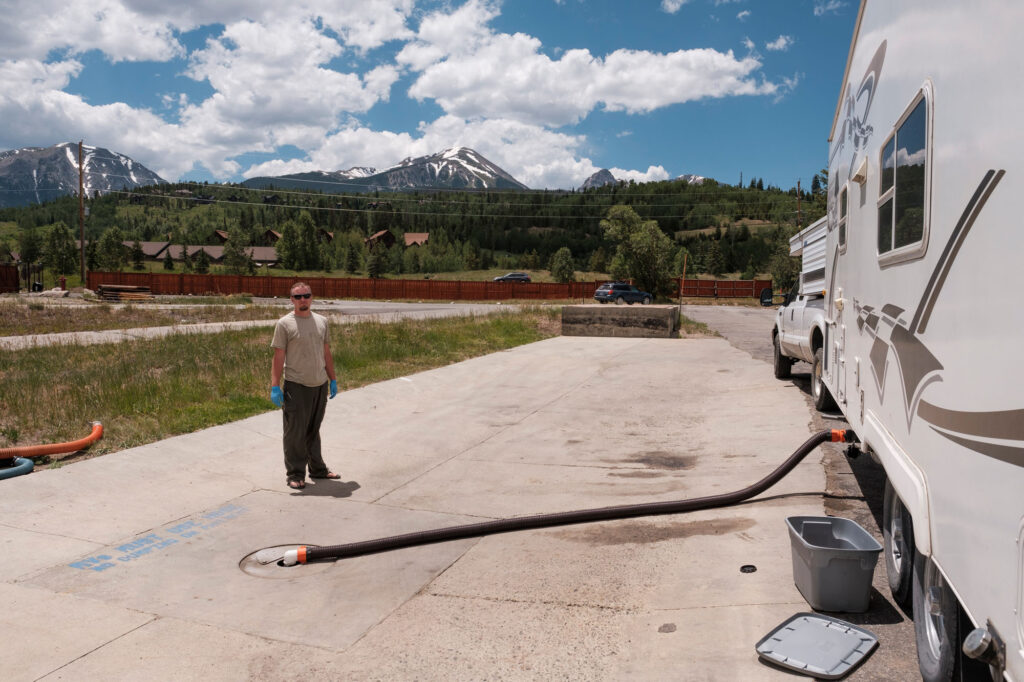
Respecting each other’s sleep cycles. It all depends on the size of your rig but it can be tricky for a night owl and an early riser to coexist in a small space. I tend to sleep more hours in the night than Mark while he tends to nap in the middle of the day. Knowing this about one another helps us understand when one of us needs to live quietly so the other can sleep. With that, a nice set of headphones is a great accessory for living peacefully with your partner in a tiny space. And further, I couldn’t sleep without a good eye mask.
Respecting our different expectations for cleanliness and organization. I can be OCD when it comes to the tidiness of our RV. Mark has less of a need for everything to be in a certain place at all times. It isn’t easy keeping a small space tidy 24/7. It’s quick to clean and just as quick to get dirty and disheveled. I don’t expect Mark to live exactly how I prefer and vice versa. Instead, we find a happy medium. I’ve tried to let loose a little and he tries to be more tidy. It never fails though that I can only let loose for so long until I get itchy for organization. I express that need and we collectively clean the place up. Vocalizing that need and Mark respecting it is huge for us.
Asking for alone time. If one of us is craving some peace and quiet we’ll simply say so. Going for a solo drive or walk or putting headphones on and tuning in to a podcast are some of the ways we’ll satisfy that need.
Mark & I have always thrived as a couple that is together 24/7. But an interesting marital experiment happened when we pursued separate endeavors and were apart more than we were together for a two year period of time. Transitioning in and out of that lifestyle was challenging. It took time to get used to always being apart, and it again took time to get back in to our groove of being together all the time again. It’s a process to reshape your daily routine in a way that is harmonious with your partner’s daily routine. It takes time and experimentation to figure out what works for you both as a couple. If you and your partner decide to take up full-time travel, don’t stress if it’s not a smooth ride at first. You’re likely to adapt if you’re patient and allow time for your relationship to evolve with your new lifestyle.
I hope you enjoyed this post! I’ll be back next week with a meaty write-up about Defining Your Travel Style. Something I believe to be a pivotal step in maximizing your success while living a mobile lifestyle. See you then!

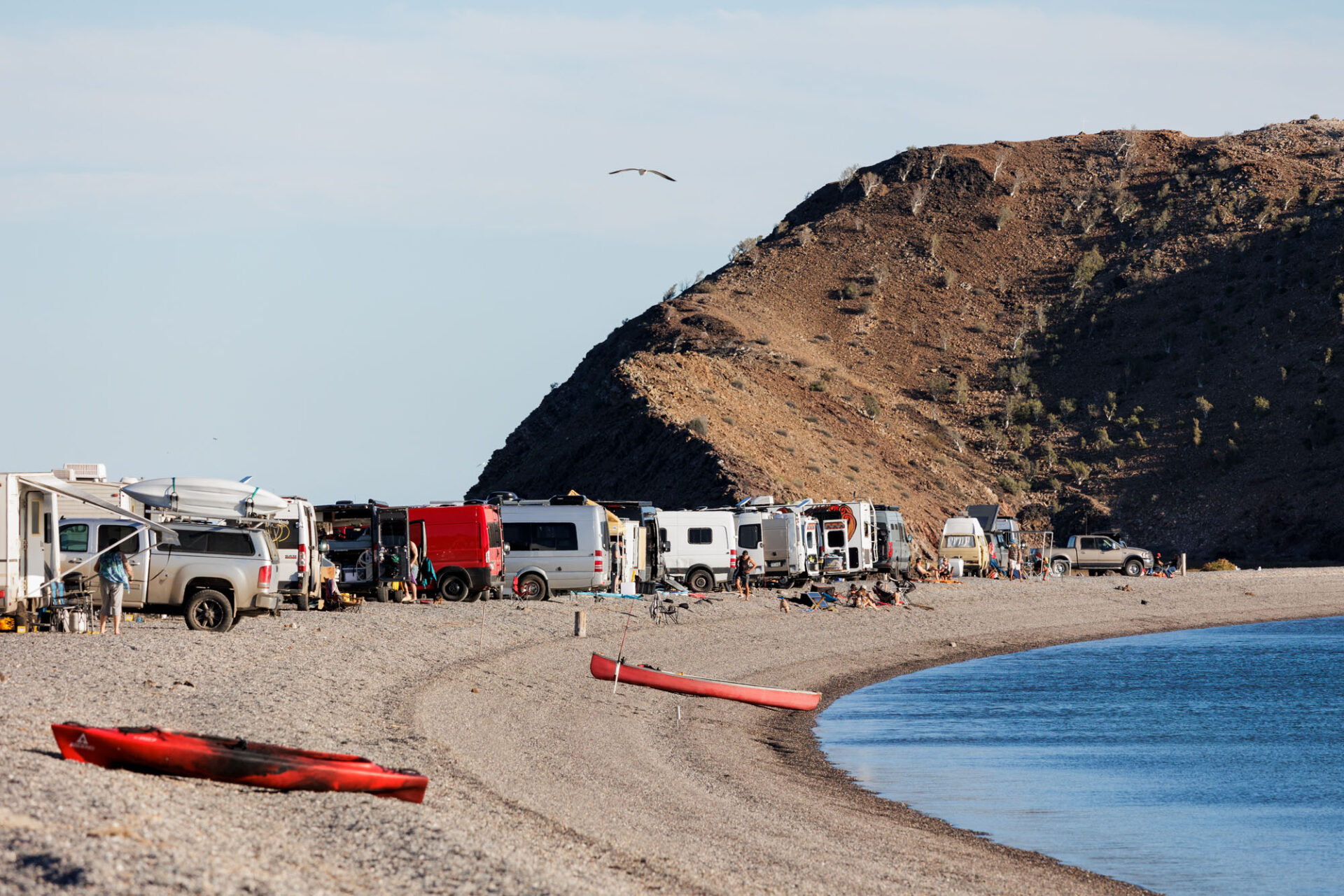
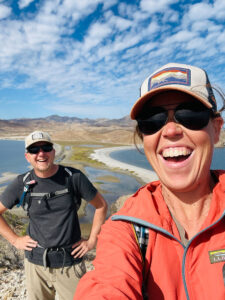
So enjoy following you. So happy for you being about to live your lives your way. Linny
I can relate to the awkward social aspect. But you’re right, I meet more folks on the road then I do when I’m at my home base. After awhile I get the itch to travel because it’s fun meeting others who are out enjoying themselves.